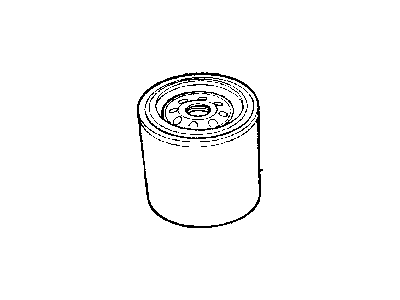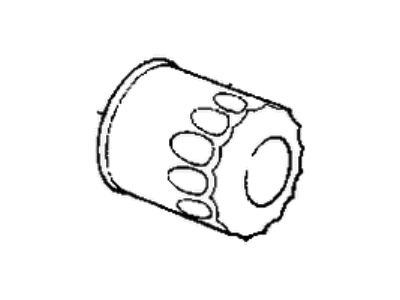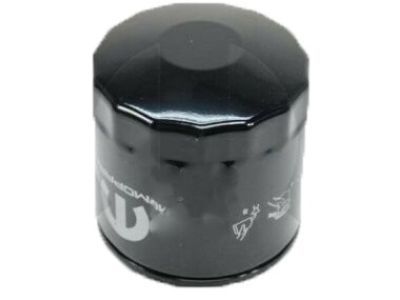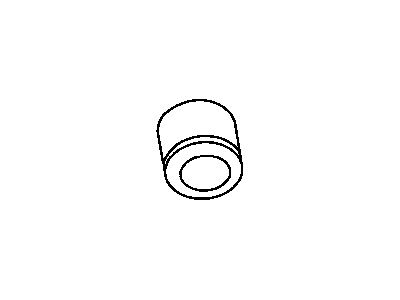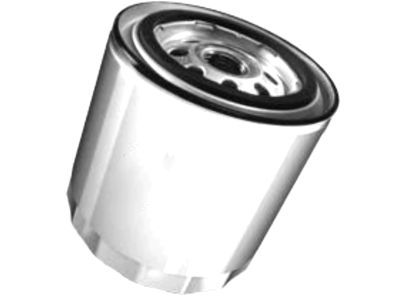
My Garage
My Account
Cart
Genuine Dodge Ramcharger Oil Filter
Engine Oil filter- Select Vehicle by Model
- Select Vehicle by VIN
Select Vehicle by Model
orMake
Model
Year
Select Vehicle by VIN
For the most accurate results, select vehicle by your VIN (Vehicle Identification Number).
4 Oil Filters found
Dodge Ramcharger Oil Filter
The Oil Filter in Dodge Ramcharger vehicles is very essential in monitoring the wellbeing of the engine since it ensures that the engine oil is clean from any deposits. It works through the capturing and holding of the dirt particles while at the same time passing the oil to circulate within the engine for proper lubrication and preventing the formation of wear and corrosive films. Dodge Ramcharger models, like many other trucks, have incorporated both eliminate construction cartridge filters and the easier to implement spin-on filters with the later having a metal body specifically for holding up to high oil pressure and engine vibrations. Dodge Ramcharger oil filters are designed to satisfy performance expected from such vehicle as they have thicker canister walls and exclusive synthetic media which enables them to provide high flow rates and at the same time capture up to 99% of dangerous particles. Some of these filters usually contain additional parts such as the anti-drain back and bypass valve that help in providing oil pressure at the time of starting the engine and help in maintaining the oil circulation even under adverse circumstances.
Looking for affordable and high-quality auto parts? Then you have already arrived at the proper online shop. We offer all Dodge Ramcharger Oil Filter at great affordable prices. Moreover, all genuine Dodge Ramcharger Oil Filter come with a manufacturer's warranty. In the long run, you would realize you have saved a lot of trouble and money with OEM parts from here.
Dodge Ramcharger Oil Filter Parts Questions & Experts Answers
- Q: Why are frequent oil and oil filter changes essential for preventative maintenance on Dodge Ramcharger?A:Regular oil changes are critical as over time base engine oil becomes thinned out as well as contaminated and will experience high levels of wear. Another argument would be to change it every other time one is changing oil but given the highly affordable prices and ease of fitting, it is advised that it is changed with every oil. These are a wrench used to loosen the drain plug, an oil filter wrench, a six-quart container for the used oil and a funnel or spout is used to transfer new oil. Oil and other spills will be dealt using clean rags and newspapers and for better access of the vehicle underside it is safe to use a hoist, ramps or jackstands and not by working in a car with a jack. That is why it is advisable to familiarize oneself with the locations of the oil drain plug and filter locations before starting because components of the engine are going to be warm. Owing to the fact that engine warming up means reaching normal operating temperature, better oil drainage can be done and the right type of oil can be decided earlier. When this is done, tools and rags should be spread on the area where the vehicle is to be raised, while the drain pan should be placed under the drain plug as oil will initially drain with considerable force. It is necessary to let the oil drain to the bottom of the engine after having turned the drain plug counterclockwise to release it, clean the plug and then screw it back clockwise and tight. The drain pan should then be placed directly underneath the oil filter, this can be unscrewed with a filter wrench; if the filter is to tight one can use either a metal rod or screw driver. When the old filter has been unscrewed from the air terminal unit, it should be emptied into the drain pan and than to ensure that the new filter resembles it. Using a clean cloth, one should clean the mounting area and ensure that the new filter does not have a stuck rubber gasket before filling it with oil before applying a thin layer of the same on the gasket. It should be installed as recommended by the maker of the filter in a manner that does not over-tighten the filter. All the tools should be pulled out and the car lowered before one should locate the oil filler cap where fresh oil should be poured until the dip stick indicates this on the container after sometimes. When the engine is running for sometime, circulation is created, and leaks should be checked at this time. The oil level should be topped to the Full mark on the dipstick, and during the first few journeys after the change, it is advised that one looks out for any dripping and also the level of oil left. Last but not the least, the old oil needs to be disposed off appropriately where, and there are special facilities to dispose off the used oil, they have to make sure that the oil is cooled and packed properly for transportation.

